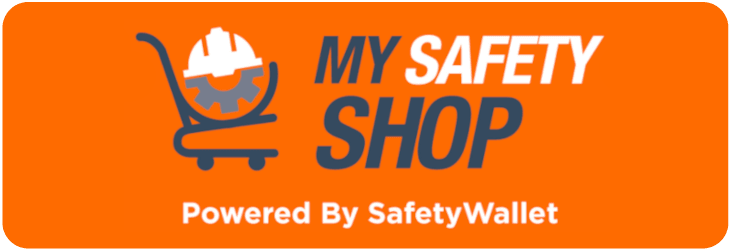Health and Safety Risk Assessment Case Study – Slips, Trips, and Falls
Health and Safety Risk Assessment Case Study
There have been numerous case studies that have been done on health and safety, and one of the many studies include a health and safety risk assessment case study on slips, trips, and falls.
Slips, trips, and falls – explained
- Slips happen when a person’s foot loses traction with the ground surface as result of inappropriate footwear, or walking on slippery floor surfaces which are polished, wet, or greasy.
- Trips can occur when a person’s foot catches on an object or a surface. In a lot of cases, people tend to trip on low obstacles which are hard to identify such as uneven edges that exist in flooring, loose mats, open drawers, untidy tools, or electrical cables that lay across the ground.
- Falls can result from several things including slips or trips; however, many occur during falls from low heights such as steps, stairs, curbs, falling into a hole, a ditch, or into water.
Challenges and Scale of the Problem
There are numerous organisations that report a significant number of slips, trips, and falls that occur annually that affect both employees as well as visitors to the premises. There have been numerous causes to these, and different solutions have been identified for each, which will be discussed more thoroughly in the section provided.
In a lot of case studies, such causes and solutions were addressed in consultation with the relevant staff, managers, architects, builders, and numerous other relevant personnel, both internal and external.
These case studies showed a typical lack in appreciation of the scale of the problem and how easy it could be to stop or reduce the number of accidents, in addition to the absence for a one-stop source of information on how to prevent incidents like these.
OHS Solution
The solutions to occurrences such as these incidents were reviewed in numerous case studies, and the causes thoroughly investigated. It is crucial to involve employees and management as they must be made aware of the scale associated with the problem.
Incidents were also reviewed in numerous Health and Safety Committee meetings and included in annual OHS reports which were presented to senior managers. Both employees and managers were encouraged to report near miss incidents, and this showed a noticeable increase in the number of incidents that were reported.
Through this, a unique slip, trip, and fall risk assessment template could be designed and prepared and solutions were identified and discussed with the relevant employees, and managers, followed by implementation.
This was followed by the preparation of slip, trip, and fall prevention guidelines which prepared and distributed to each department in the organisation. Additional guidelines were also prepared for cleaning and maintenance staff.
Managers received training on their responsibilities to ensure that safety of employees and visitors could be ensured. The wearing of the correct PPE was also encouraged with slips, trips, and falls prevention raised during the health and safety training.
Additional signage was placed to warn of the dangers associated with slips, and to encourage the use of mats, cleaning spills, and numerous other measures. Slip resistant flooring was introduced where needed and a quarterly department safety checklist was introduced, to be completed so that potential problems could be reported for correction by the relevant department.
There was also an annual safety management checklist developed that includes questions relating to slips, trips, and fall prevention. This checklist is the responsibility of managers and must be completed timeously.
Practical Examples
- Consultation with employees and managers to create awareness.
- Informing managers of their responsibilities through training sessions and information sheets.
- Encouraging employees and managers to report all incidents, no matter how small.
- More information sharing with employees and visitors.
- Emphasis on managing these hazards consistently, and numerous others.
Manage your Health and Safety Risk Controls
Keeping your workplace legally Health and Safety Compliant may seem like a daunting task. At MAKROSAFE, we have an experienced team of OHS experts available to assist in keeping your company Health and Safety Compliant according to South African Health and Safety Acts and Regulations.
The MAKROSAFE Health and Safety Risk Control Package will assist you with your Risk Management Programme.
By signing up with our Health and Safety Risk Control Package, MAKROSAFE will assist you with your Risk Management journey.
How does SafetyWallet support its subscribers?
SafetyWallet, in partnership with MAKROSAFE and OHS Online, ensures that subscribers can obtain the highest level of compliance with the OHS Act, all other Regulations, and more.
Through the assistance and support in the OHS programme of the subscriber, SafetyWallet helps subscribers with the OHS risk assessments that must be conducted to ensure that subscribers are compliant in providing a better working environment.
MAKROSAFE have been assisting clients for more than 23 years with Risk Assessments in the workplace, contact us now to find out how we can assist you.
MAKROSAFE / SAFETYWALLET / MY SAFETY SHOP are in Partnership.

-Health-and-Safety-Risk-Assessment-Case-Study-Slips-Trips-and-Falls-Banner-1.jpg)
Comments (1)
It Really helpful for an Fresher to understand the concepts
2022-10-26 13:08:57Dear Rubini Thank you for your comment, we really do appreciate it... Please do follow this link and choose a package that will suit your business and your needs for Risk Management: https://www.mysafetyshop.co.za/Shop/Category/Monthly-Health-and-Safety-Consulting-Services
2022-10-27 08:27:06